Archaeological Institute of America
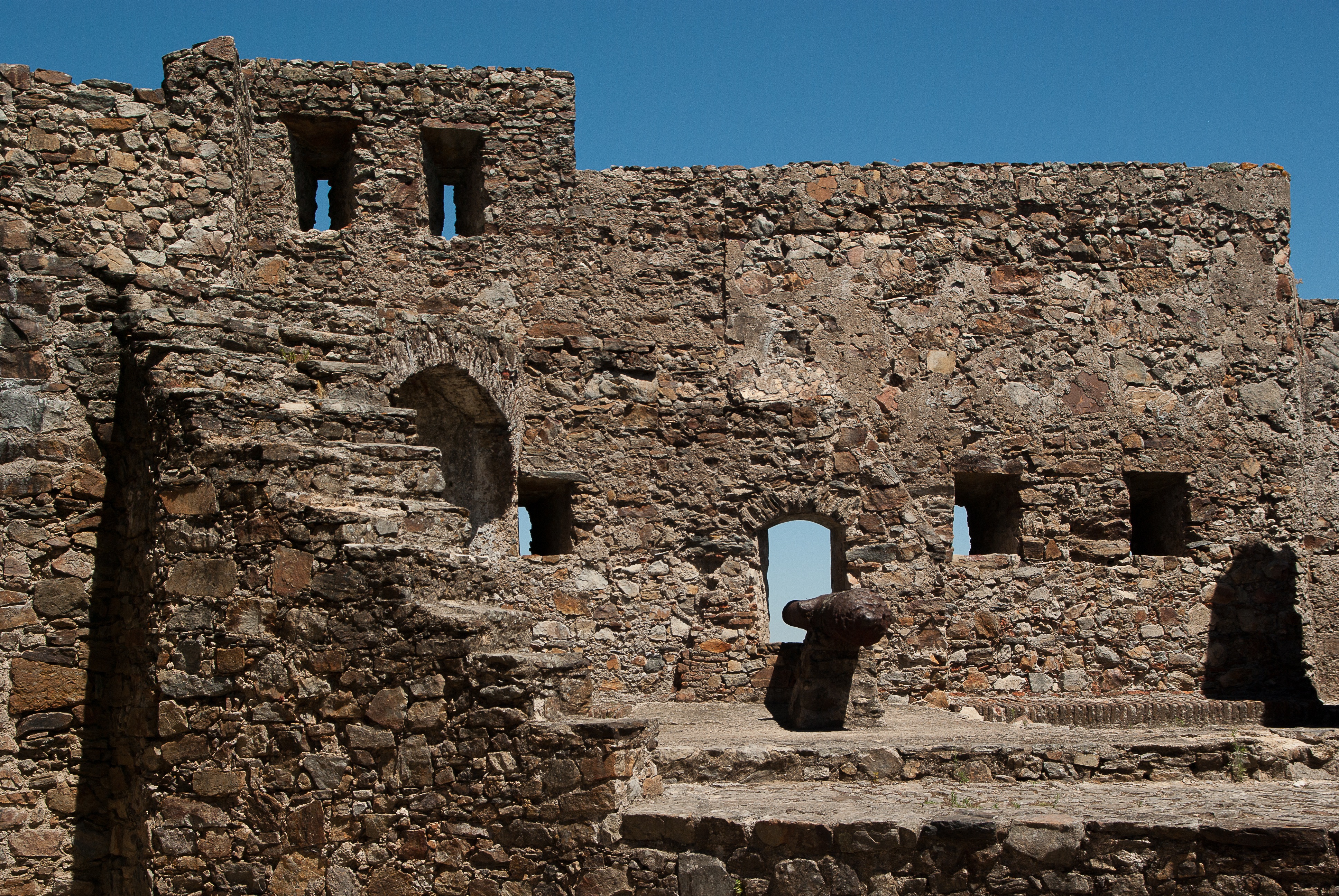
Deadline: November 1, 2024
Announced: By March 1
Amount: Up to $7,000
Purpose: The fellowship can be used to support research and study related to the archaeology of Portugal, including the Autonomous Regions of the Azores and Madeira. This includes, but is not limited to, excavations, research projects, colloquia, symposia, publications, and travel for research or to academic meetings for the purpose of presenting papers on the archaeology of Portugal. Funds may not be used for institutional overhead, institutional administrative recovery costs, or institutional indirect costs.
The fellowship can also be used by Portuguese nationals (archaeologists and archaeology graduate students) to support research and study in the US. Individuals applying for this type of support are not limited to the study of Portuguese archaeology and funds can be used to research and study any archaeological region and topic.
Requirements:
The AIA welcomes applicants of all backgrounds and is committed to equal opportunity for all. Under no circumstances will the AIA discriminate against qualified individuals on the basis of race, color, religious creed, retaliation, national origin, ancestry, sexual orientation, gender, disability, mental illness, genetics, marital status, age, veteran status, or any other basis prohibited under applicable law.
As part of the Archaeological Institute of America’s ongoing commitment to fieldwork and families, reasonable line items for the care of dependent and elderly family members are allowable expenses for AIA grants, fellowships, and scholarships.
Please note that all application materials, including references and transcripts (if applicable), must be received at the AIA by the November 1 deadline, and must be in English.
View the Fellowship Requirements and Application Guidelines.
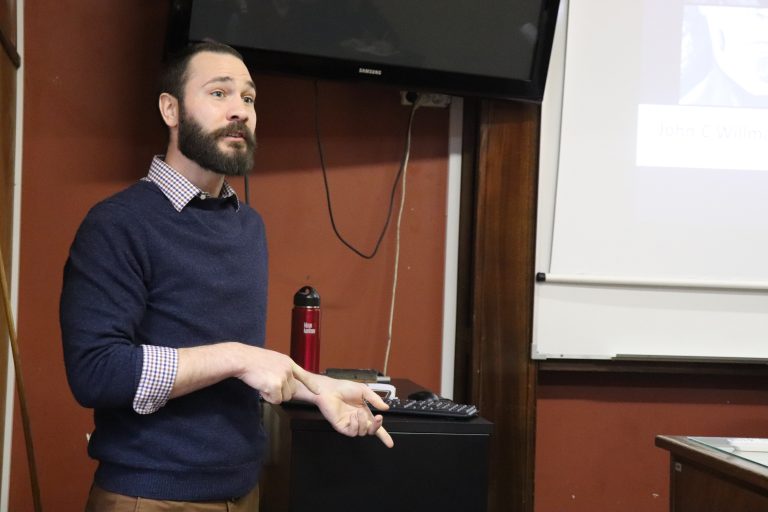
2024
University of Coimbra
This year’s AIA Archaeology of Portugal Fellowship winner Dr. John Charles Willman (University of Coimbra) will use high-resolution medical imaging data to virtually curate human remains and learn about human mobility and biological diversity among prehistoric populations located in present-day Portugal. The innovative methodology undertaken by Willman using high-resolution microcomputed tomography (microCT) scans will create virtual models that can be preserved in perpetuity and will provide unparalleled sample sizes compared to destructive methods like ancient DNA and isotopic studies. This should provide a more complex, nuanced understanding regarding the movement and intermingling of past populations within the same burial location, at the site level, and within a region.
Willman’s fellowship project will involve travel to several repositories throughout Portugal, microCT scanning at three different institutions in Lisbon, Porto, and Bordeaux, and will wrap up with virtual analyses of the images. Willman plans to make all virtual models and data derived from this research available in an open access format upon publication of his results. He hopes this project will be a launchpad for future research including 1) minimally destructive enamel peptide analysis to determine sex and explore gendered mobility, 2) analyses of dental microwear and understand sex-, age-, and site-based variation in diet, and 3) strontium isotope analyses to cross-validate and refine the conclusions made in the study he is undertaking now with funds from the AIA. We can’t wait to learn more about future discoveries made by this promising scholar!
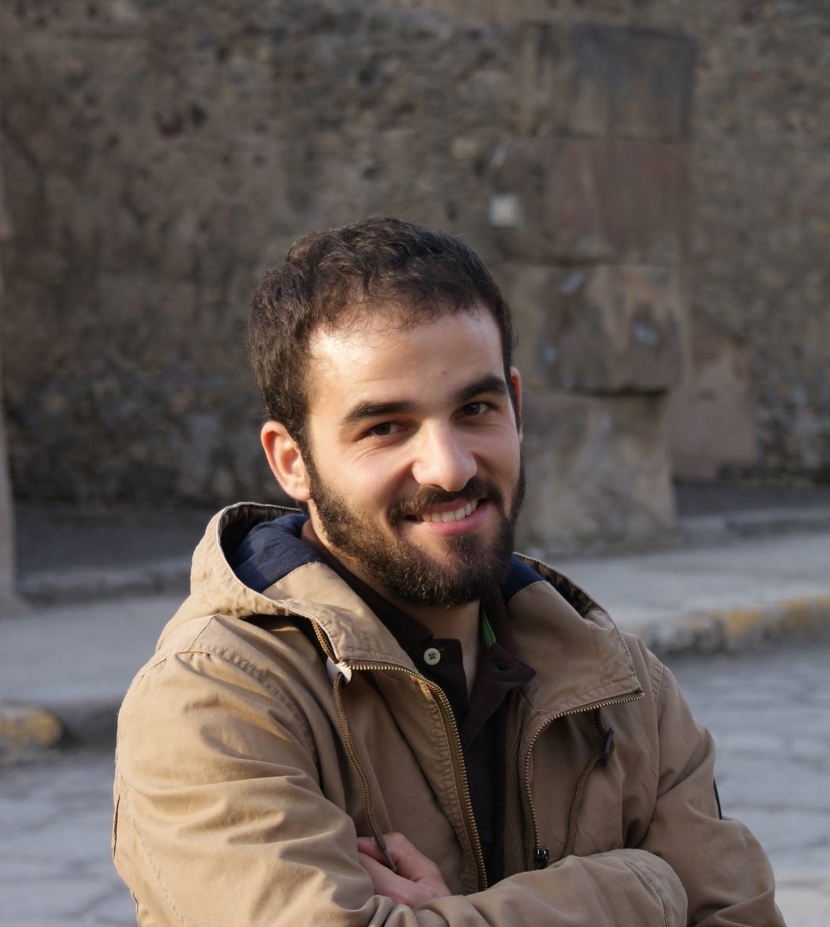
2023
Gil Felipe Vilarinho, PhD student in Archaeology at the University of Évora, is a 2023 recipient of the Archaeology of Portugal Fellowship. His dissertation project, “Pagus marmorarius: The quarrying of ornamental stone in western Roman Lusitania (Portugal),” t will shed new light on the way in which people in Lusitania – the western portion of the Iberian peninsula – extracted decorative stones, a feature often related with Roman identity. As a durable material, stone allows archaeologists to trace patterns in the economy of the region and changing aesthetic tastes. Moreover, the Romanization process brought a different, often monumental use of distinct types of stone, particularly marble, which was to become a sign of Roman-ness. This far western corner of the Roman world has, however, been frequently overlooked and studies are still scarce. Using a complementary approach that includes geochemical analysis, remote sensing and pedestrian surveys, his research aims to survey and study coloured and ornamental stone quarries exploited during the Roman period in central and Southern Portugal. The results will be published on a peer-reviewed journal and also analysed within the wider framework of his PhD research.

2023
Victoria Priola, Ph.D. candidate in the Department of Anthropology, University of Iowa, is a 2023 recipient of the Archaeology of Portugal Fellowship. Her dissertation project, “Textile Production and Regional Interaction in Late Prehistoric Iberia: A View from Perdigões (Reguengos de Monsaraz, Portugal),” she will analyze loom elements from the important ditched enclosure site of Perdigões (Reguengos de Monsaraz, Portugal). If settlements and ditched
enclosures were functionally distinct, the loom element assemblage from Perdigões should be significantly different from other contemporary settlements and similar to other ditched enclosures in the region. Her project will contribute valuable insights to the important debate surrounding the function of ditched enclosures in Southwest Iberia and, ultimately, help archaeologists better understand the nature of regional interactions through the lens of textile production during this period of emergent social complexity.
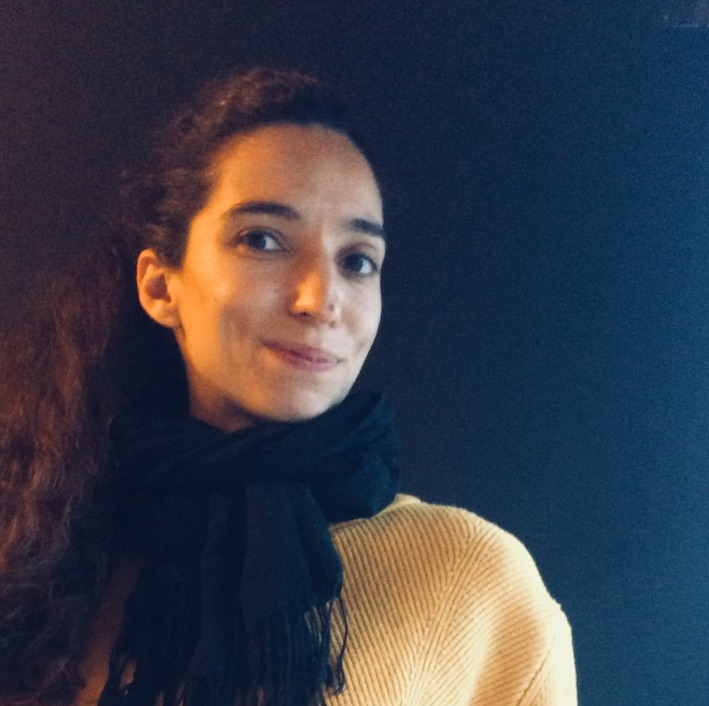
2022
Beatriz Barros, PhD candidate at Indiana University Bloomington within the Department of Anthropology, is the 2022 recipient of the Archaeology of Portugal Fellowship. Her project, “Archaeology during the Estado Novo: The Role of Women in Regional Institutions,” will focus on evaluating the role of the people comprising the lower echelons of the hierarchical archaeologically-focused institutions created in Portugal during the Estado Novo dictatorship. Specifically, it aims to uncover and share the stories of the women who were involved in archaeology at the regional level during a period of complex social and political change. The Fellowship funds will be used for travel and equipment costs.
2021
Dr. Ana Abrunhosa, Student of the Master in Geology at the University of Porto, and Researcher at the Interdisciplinary Center for Archaeology and Evolution of Human Behaviour (ICArEHB) at the Universidade do Algarve, is the 2021 recipient of the Archaeology of Portugal Fellowship. Her project, “Characterization of lithic raw materials exploited during Prehistory in western Iberia,” will focus on the analysis of lithic resources from prehistoric contexts in the Portuguese territory of the Iberian Peninsula. Several lithic assemblages spanning from the Middle Palaeolithic until the Chalcolithic from North Portugal and the Extremadura regions will be studied to determine the exploitation, modes of acquisition, and management of raw materials. The Fellowship funds will be used for travel and laboratory costs.

2020
Dr. Anna J. Waterman, Associate Professor at Mount Mercy University, is the 2020 recipient of the Archaeology of Portugal Fellowship. Her project, “From Hinterlands to the Sea: Using isotopic data from Vila Nova de São Pedro to understand mobility and economic integration of coastal and interior settlements in Late Prehistoric Portugal,” will test her hypothesis that some migrant humans and animals to the Late Neolithic-Early/Middle Bronze Age (c.3500-1500 BCE) Portuguese Estremadura were from Castro do Vila Nova de São (VNSP) (Azambuja) in Lower Tagus valley. The Fellowship funds will be used to obtain environment and faunal samples from new excavations at VNSP, using them to investigate the possibility that animals and people were moving from the interior to the large western coastal settlements.
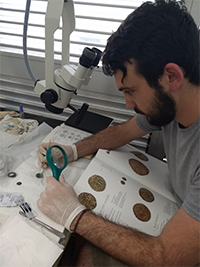
2019
Trent Trombley, Ph.D. candidate at the University of California, Berkeley, is a 2019 recipient of the Archaeology of Portugal Fellowship. He will use the fellowship funds for his project, “A bioarchaeological approach to medieval religious communities at Largo Cândido dos Reis, Santarém, Portugal” (part of his larger dissertation project on medieval Santarém). While much historical debate has focused on religion in the Middle Ages as a social denominator, Mr. Trombley will be using a bioarchaeological approach to examine how religion affected the body, health, hygienic regimens, and possibly intermarriage within and between religiously demarcated communities.
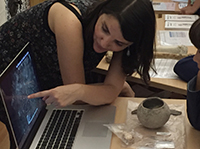
2019
Maria João de Sousa Neves, Ph.D. candidate at the Life Sciences Department at the Faculty of Sciences and Technology of the University of Coimbra, is a 2019 recipient of the Archaeology of Portugal Fellowship. She will use the funds for her project, “Outside the box: the human remains of the Chalcolithic Hypogeum I of Monte do Carrascal 2 (Beta, Portugal)‚” on one of the most interesting burial sites discovered in Portugal recently. The Hypogeum I contained the skeletal remains of over 70 individuals dated to the Chalcolithic (2900-2400 B.C.), with a preponderance of female remains. Initial analysis in the field was preliminary, and Ms. Neves will study the remains in order to characterize demographic, morphological, and pathological aspects of the group.
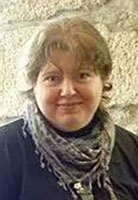
2018
Ana Lema Sinde Rosmaninho Seabra, is a Ph.D. candidate in the Department of Life Sciences at the Univeristy of Coimbra. The increase in Portugal of commercial archaeology in the context of rescue and preventive works prior to construction has given rise to a myriad of excavated archaeological human remains, a rich source of information for research. Ms. Seabra’s dissertation project, “Laid to Rest or Laid to Rise? Evaluating trends in the Christian mortuary practice in Medieval/Modern Portugal,” will evaluate patterns in this wealth of new information, and attempt to identify biases (such as age and sex) which influence the amount and type of grave goods, use and type of container, and placement of the body.
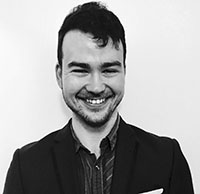
2018
David Wallace-Hare, is a Ph.D. candidate in the University of Toronto’s Department of Classics. The goal of his dissertation project, “The Archaeology of Roman Beekeeping: Recovering Apiculture Sites from Northern and Central Portugal,” is to lay the groundwork for a more comprehensive study of ancient apiculture in Portugal. Mr. Wallace-Hare will use the fellowship to travel to a number of Portuguese museums to examine ceramic finds, and using Latin inscriptions and personal name-types will try to identify additional apiculture sites, particularly in the Viana do Castelo/Braga/Porto/Viseu, and Guarda/Castelo Branco regions.
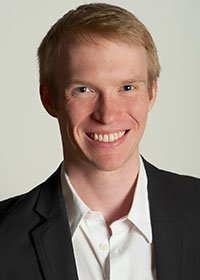
2017
Christopher Motz is a Ph.D. candidate at the University of Cincinnati in the Classics Department. His project, “Knowledge Networks and Workshop Construction in Roman Portugal,” will focus on the spread of Roman culture by examining the transmission of knowledge required to construct the workshops used in fish-salting. Mr. Motz’s project theorizes that fixtures within these workshops were not transportable; therefore, the spread of their use parallels the spread of technical knowledge particular to Roman culture. The Fellowship will allow Mr. Motz to visit and examine a substantial number of fish-salting workshops on the Portuguese coast.
2016
Ricardo Miguel Alves Correia Godinho is a Ph.D. candidate at the University of York/Hull York Medical School. His project, “Mandibular morphology and the Mesolithic-Neolithic transition‚” will examine the biological effect on skull morphology of the transition from a hunter-gatherer subsistence style to an agro-pastoralist mode of subsistence. Mr. Godinho will be examining skeletal samples from the Muge shell middens and from Casa da Moura, and will be investigating whether the association between mandibular form and mode of subsistence found in other geographic areas is also present in Portugal. Mr. Godinho will, with the help of the fellowship, travel to Lisbon to conduct CT scanning of the skeletal collections.
Click here and here to read more of Mr. Godinho’s research funded by the Archaeology of Portugal Fellowship.
Read about Ricardo Miguel Alves Correia Godinho's experience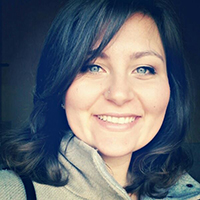
2016
Alice Micaela Toso is a Ph.D. candidate at the University of York in the Department of Archaeology. Her project, “Diet in the multi-faith society of medieval Portugal,” seeks to examine the diets of Islamic and Christian communities living at the same time, but under different socio-political and religious control, in medieval Portugal. Ms. Toso, with the help of the fellowship, will analyze over 300 individuals in three regions of Portugal, using various chemical to study their diets and form a larger picture of the foodways of Portugal. Her project represents the first application of stable isotopes to understand diet in the multi-faith society of medieval Islamic Portugal and addresses a significant gap in our knowledge, advancing research in an understudied area of Islamic archaeology in the Iberian Peninsula.
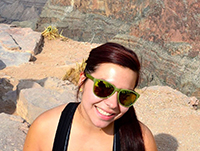
2016
Milena Carvalho is a Ph.D. candidate in Archaeology at the University of New Mexico. Her project, “Assessing Rabbit Exploitation in the Middle to Upper Paleolithic Transition at Lapa do Picareiro, Portugal‚” will examine differences in subsistence strategies between Middle and Upper Paleolithic in order to understand the replacement of Neanderthals by anatomically modern humans. The study will include analyses of rabbit teeth in order to investigate changes in the paleoclimate, taphonomic study of Middle and Upper Paleolithic faunal sequences, and testing for differences in relative abundance of rabbit bones to identify any significant changes in rabbit exploitation during the Middle and Upper Paleolithic. The project as a whole will contribute to the understanding of the role that diet played in Neanderthal extinction.
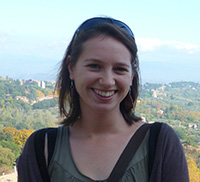
2015
Dr. Elizabeth Wright received her 2014 doctorate from the University of Sheffield. Her project, “Animal husbandry in late Neolithic and Chalcolithic Portugal‚” will use the award of $7,270 to conduct isotopic analysis to examine the role of domesticated and wild animals in the changing economies of this period. The project will run parallel to a larger post-doctoral project she is conducting that will undertake a thorough zooarchaeological analysis of faunal assemblages. Together these projects will greatly improve understanding of the cultural and economic frameworks of late Prehistoric Portugal.
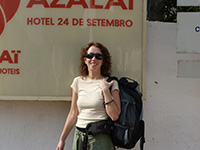
2015
Dr. Maria Teresa Ferreira received her 2013 doctorate in Forensic Anthropology from the University of Coimbra, and her Fellowship project is “Evidence of violence and maltreatment in the 15th-17th centuries: African slaves buried at Valle da Gafaria (Lagos, Portugal)”. A rescue excavation performed at this site, located outside the medieval walls of the city of Lagos, uncovered a deposit of 158 skeletons with African characteristics dating from the first historical mention of African slaves arriving at the settlement. The award of $5,633 will be used toward analysis of the remains, particularly for evidence of trauma, maltreatment, and stress-markers, and toward the completion of a final report on the findings.
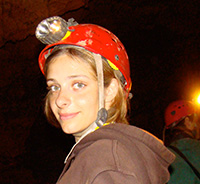
2015
Rita Dupont de Sousa Dias is a Ph.D. candidate in Archaeology with the University of Algarve. Her project, “Mesolithic shellmidden exploitation: sclerochronology analysis from the Cabe√ßo de Amoreira (SW Iberia, Portugal)‚” will examine the ecological behavior of the last communities of hunter-gatherers in Western Europe during the Pleistocene-Holocene transition. The award of ‚Ǩ4,500 will be used for Ms. Dias’ travel to the Sclerochronology and Scleroclimatology Research Laboratory at Bangor University in the UK, and for her training and analysis there of the Mesolithic shellmidden at Cabe√ßo de Amoreira, one of the most important middens in the Muge complex.
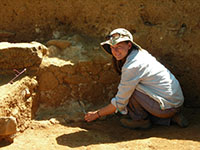
2014
Linda Gosner is a doctoral candidate with the Joukowsky Institute for Archaeology and the Ancient World, at Brown University. Her project, “Mining and Rural Settlement in Roman Portugal‚” examines the impact of the grand scale mining in Roman Iberia on local communities in their regional context. The award funds will be used towards library research in Lisbon, visits to archaeological sites and museums in southern Portugal (Algarve and Baixo Alentejo) and northern Portugal (Regi√£o Norte). Ms. Gosner will include her findings from this research trip towards a larger dissertation project, to form a better understanding of the social and economic impacts of this important industry in the far western corner of the Roman Empire.
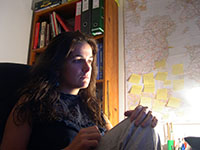
2014
Tania Manuel Casimiro is a post-doctoral researcher at Universidade Nova de Lisboa, Institute of Archaeology. Her project, “Portuguese Coarseware in Post-Medieval Atlantic Trade‚” aims to undertake the first systematic analysis of Portuguese coarse ware ceramics exported around the North Atlantic from the late 16th through 18th centuries. This project will record the occurrence of Portuguese coarseware in archaeological sites in England, Canada, and the north-eastern United States and will trace these ceramics back to Portugal through a comprehensive study of coarse ware production zones; this research will provide a crucial base of knowledge for the future identification and study of this ceramic type throughout the North Atlantic region.
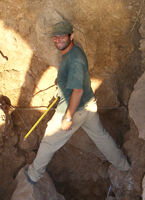
2013
Dr. Telmo Pereira is a post-doctoral grantee at the University of Algarve in Portugal. His project, “The Neanderthal cognition: chert procurement in SW Iberia using PIXE analysis,” will examine evidence of Modern Human Behaviour (long-range procurement and exchange of raw materials) in Neolithic populations in the southwest Iberian landscape through the analysis of chert artifacts. Archaeological samples from Columbeira Cave, Praia Rei Cortiço, Mira Nascente, Vale Boi and Picareiro Cave will be examined because they are dated with numerical techniques, under investigation, well-preserved and represent key-sites for this type of analysis. The award funds will be used towards PIXE analysis of chert artifacts to match geological samples and ancient sources with archaeological chert nodules.
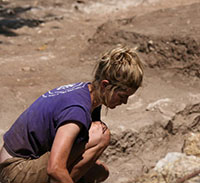
2013
Sarah Beckmann is a doctoral candidate with the Department of Art and Archaeology of the Mediterranean World, University of Pennsylvania. Her project, “Sculptural Collecting in Southern Portugal in Late-Antiquity,” will examine statuary programs in three late-antique villas in southern Portugal: Milreu, S√£o Cucufate, and Quinta do Marim. The complete sculptural assemblages from these villas have never been systematically analyzed, and Ms. Beckmann proposes to examine the sculpture in the context of the entire domestic assemblage, situating it within a larger analytical framework. Award funds will be used towards fieldwork and archival research in the Algarve and Alentejo, primarily at the Museu Nacional de Arqueologia in Faro and the Museu Regional in Beja.

2012
Joe Alan Artz, Director of the Geospatial Program at the University of Iowa Office of the State Archaeologist, is a 2012 recipient of the Archaeology of Portugal Fellowship. His project is “GIS Analysis of Commingled Human Remains at Bolores, an Artificial Cave Mortuary in the Portuguese Estremadura”. Funding from the fellowship will be used to complete a detailed spatial analysis of the Copper Age through Early Bronze Age mortuary deposit, with the objective of searching for patterned groupings of skeletal elements, in particular the clustering of bone materials by age groups and body parts. Forensic methods employed in the analysis of mass graves will be used, as well as 2D and 3D visualization. This research, and the methodologies developed to conduct it, will contribute to better spatial and diachronic understandings of the burial practices and lifeways of late prehistoric Portugal.
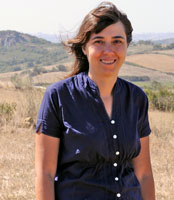
2012
Ana Catarina Sousa, Professor at the University of Lisbon, is a 2012 recipient of the Archaeology of Portugal Fellowship. Her project is “Earth, Water, Air, Fire. Cova da Baleia in the Iberian Early Mesolithic‚” and her aims are to obtain a solid set of radiocarbon dates for understanding the dynamics of this site on the Lisbon Peninsula. Cova da Baleia was the target of extensive rescue excavations, revealing the largest and best preserved collection of clay structures for combustion in all of pre-historic Western Europe. The complexity of the domestic structures identified, the excellent condition, the extent of the excavated area, and the break with the contemporary models of settlement in Iberia, make Cova da Baleia a case study that could change the paradigm of the Early Mesolithic in Portugal and Europe. Project activities include radiocarbon and paleobotanical work at the Centre for Archaeology, University of Lisbon.
2011
Jonathan Haws, Associate Professor with the Department of Anthropology, University of Louisville, is the 2011 recipient of the Archaeology of Portugal Fellowship. His project, “The Middle-Upper Paleolithic transition in Portugal: the view from Lapa do Picareiro” will examine the transition marked by Neanderthal extinction and anatomically modern human colonization of Southern Iberia, and involves excavating the cave site at Lapa do Picareiro. This site in central Portugal has intact deposits dated 10,000-45,000 years ago that encompass the transition period and allow for study of Neanderthal and modern human socio-ecology. The excavation will open a wider horizontal area in the deposits to recover faunal, floral, lithic and sedimentary data necessary to understand diet and subsistence adaptations, technological changes across the Middle-Upper Paleolithic transition and determine whether or not climate and environmental change played a causal role in Neanderthal extinction and modern human success. Professor Haws will use the $9,319 award toward travel and living expenses while in Portugal, and the costs of radiocarbon dating.
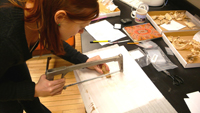
2010
Anna J. Waterman, a doctoral student with the University of Iowa, is this year’s recipient of the Archaeology of Portugal Fellowship. Her project, and dissertation topic, is “Marked in Life and Death: Identifying Biological Markers of Social Differentiation in Late Prehistoric Portugal‚” and her work is on Late Neolithic and Copper Age (3500-2000 BC) burials near the Zambujal settlement site in the Portuguese Estremadura. Ms. Waterman will use the award of $7,812 to look for differences in health, status, pathology rates, age-at-death ratios, diet, and mobility patterns to assess social differentiation in the communities, augmenting work that has been done on grave goods and burial practices for the area. Her research will also further understanding of health, diet and mobility for the region and time period. Ms. Waterman’s fellowship activities will include travel to Portugal for data collection, preparation of samples and delivery to Florida laboratories, and analysis of results.
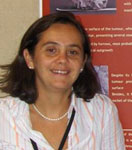
2009
Ana Maria Silva holds degrees in biology and biological anthropology from Portugal’s University of Coimbra, where she is currently assistant professor of anthropology and with the Research Centre for Anthropology and Health. Silva’s project is “Tales from the Dead: Funerary Practices in the Late Neolithic Hypogeum of Monte Canelas I (Alcalar, Algarve, Portugal).” The study focuses on of one of the sites found in Portugal and across southwest Europe that indicate complex funerary behavior. The Monte Canelas I site, a Late Neolithic artificial cave, has revealed more than 7,700 bone fragments belonging to at least 171 individuals. It is one of the few sites where the new discipline of “archeothanatology” can be applied in which each bone’s position and geoarchaeological and taphonomical information is recorded. The $10,000 fellowship award will support scanning, GIS analysis, and radiocarbon dating, with the aim of precisely dating the relative chronology of depositions at the site, and wider goal of better understanding the complex relationship between the living and the dead in this and similar prehistoric societies.
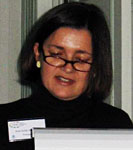
2008
Ana Maria Gonçalves Ávila de Melo is the 2008 recipient of the Archaeology of Portugal Fellowship. Her project is the “Prehistoric Metallurgy in the Castro de Pragança, Estremadura, Western Portugal”. The collection of metal artifacts and debris from the site of Castro de Pragança is the largest from any single Portuguese prehistoric settlement, and is housed in the Museu Nacional de Arqueologia in Lisbon. Less than 10% of the material has been studied, and the main purpose of Ms. de Melo’s project is to expand the preliminary research recently conducted, and to understand the technological and social conditions that accompanied the bronze artifact production and circulation during the Chalcolithic through the Iron Age. Ms. de Melo hopes to shed light on social organization of the people involved in the production and consumption of these materials.
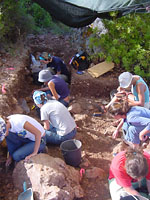
2007
Universidade do Algarve
A Tale of Two Seas: Upper Paleolithic Ecology in Vale Boi, Southwestern Algarve, Portugal
Bicho’s research focuses on Iberian Upper Paleolithic ecology, which is known mainly from a few relatively confined areas. Little research has been done to link the cultural dynamics on the Iberian Peninsula as a whole, but the discovery of the rock-shelter of Vale Boi, which is currently the earliest occupation of modern humans in southwestern Iberia, will allow for the investigation of the transition from the Middle to Upper Paleolithic periods through human ecology, subsistence strategies, land use, social interaction, symbolic behavior, and technological traits in the area that seems to have been the last refuge of the Neanderthal populations.

2007
University of Arizona
Community Organization and Human Foraging Decisions through the Upper Paleolithic to Epi-Paleolithic in Southern Portugal
Tina Manne’s research aims to reveal changes in human foraging behavior and site function during the Upper and Epi-Paleolithic periods. The coastal archaeological site of Vale Boi has the potential to provide detailed information on questions of changing human foraging decisions. Prior research in the central and eastern sections of the Mediterranean Rim suggest that increasing population pressure was the catalyst for increasing diet breadth and subsequent technological radiation. Systematic research of this issue has not previously been made in the western area of the Mediterranean rim. Tina will also explore the probable effect of the relative geographic isolation of the southernmost tip of Iberia on the evolution of human foraging behavior and subsistence technology.
2007
Universidade de Lisboa
Terra Sigillata From the Villa of Torre de Palma: Consumption and Trade in Roman Lusitania, Portugal
Maia Langley is researching the Torre de Palma Roman Villa–the largest known rural villa in Iberia–through the analysis of the terra sigillata found on site. The temporal and geographical distribution of this distinctive and widespread ceramic ware holds the key to understanding local and long-distance trade and consumption patterns. Maia has now catalogued nearly 15,800 sherds of this pottery, which has never been comprehensively studied, and discovered the existence of two fabrics in this collection whose proveniences have yet to be classified by other scholars. She hopes to identify the production centers of these unknown fabrics and add to the spectrum of fabrics that were produced mainly in areas of Hispania and North Africa.
2007
University of Sheffield
Pottery Technology and Society in Early Bronze Age Central Portugal: An Integrated Approach
Ana Jorge’s research seeks to understand cultural change in prehistoric Iberian Peninsula. Through an integrated approach to ceramic technology that combines stylistic and analytical data, she hopes to illuminate issues of identity, trade, and technological change. Integrated analytical programs have not yet been implemented on such material, so the project has major implications also for the development of methodologies of ceramic study in Portugal.